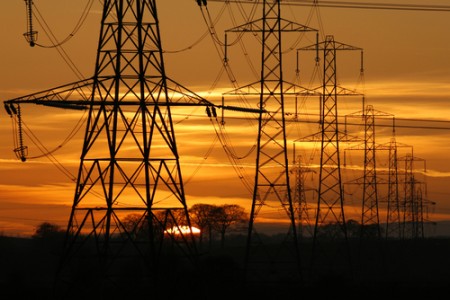By Margaret Ryan, AOL Energy
The first thing the environmentally aware neighborhood of the future does when it gets home is plug in its electric cars, and that’s a problem.
“That’s a looming utility nightmare,” says Jim Pauley, Schneider Electric’s new senior vice president for External Affairs and Government Relations. “Utility infrastructure was built for something completely different, and neighborhood concentrations pulling new EV loads at 6 p.m. on still-hot afternoons could be disastrous for local distribution grids.”

That’s one reason he’s hoping to see continued, and expanded, federal incentives to build out infrastructure for electric vehicle (EV) charging. Targeted charging technology would let utilities “talk” to chargers and spread out the demand and underpin the incentives to integrate an array of “smart” technology across the electricity system.
For more on changing federal transmission policy, read: Paying For The New Grid.
Pauley is a Kentuckian and engineer now representing Schneider, a Paris-based multinational energy management firm, before legislators and regulators in Washington, D.C. Schneider employs 110,000 people, 18,000 of them in the US, which accounts for $6 billion of its $26 billion in annual sales in energy controls, systems and services.
Two-way communication is the heart of all the “smart grid” talk, the digital controls that can let operators and consumers know and optimize electricity usage. In a recent interview in Washington DC, Pauley told AOL Energy that communication starts at the generating plant and goes all the way into businesses and homes, where big loads like air-conditioning–and EV chargers–can be cycled by utilities. Communication is integral to municipal EV charging infrastructure, like the system Schneider is working on with Fort Collins, Colorado.
The same goes for “smart buildings,” another Schneider business focus, Pauley said, where large commercial buildings are being outfitted with controls that communicate internally and externally, to optimize energy use.
Private Investment, Public Speed
The private sector can and will invest in all this energy-saving, Pauley said, but it will all happen much faster if the federal government provides, or continues, incentives and policies to spur it.
One driver is realization among both utilities and their regulators that efficiency and demand response are key to meeting growing electricity demand, Pauley said.
The Obama Administration’s ongoing efforts for open interoperability standards for “smart” communications–akin to Internet standards that let entrepreneurs write programs that work across the web–are an important “enabler” for the smart grid, Pauley said. Schneider has been working with its trade associations in that effort, he noted.
The Federal Energy Regulatory Commission has also been important in leveling the playing field for demand response, Pauley said, with FERC insisting that grid operators treat removing load on par with adding generation. Schneider is also talking with state and local regulators, he said, to try to “raise the profile” of “smart” solutions.
The More Consumers Know
But “smart” will really catch on across the industry, he said, “when consumers can see the benefits.” That makes the roll-out of the home smart meter vital.
Roll-outs so far have hit some customer resistance, and he said, “the lesson is more education. We need to take more time to talk to customers” before installing the high-tech equipment.
Among the big concerns: privacy and ownership of household usage data. Pauley said Schneider sees a need for legislation like Senator Scott Brown’s Electric Consumer Right to Know Act (S 1029), or the e-Know Act. The Massachusetts Republican’s bill would guarantee consumers control over information about their own electricity use.
Pauley also sees a federal role in providing loans, tax breaks, and grants to help speed the adoption of smart building and EV infrastructure, especially for large institutions like universities and hospitals, and for commercial building owners who otherwise have little incentive to install retrofits boosting energy efficiency because they pass through energy costs to tenants. He pointed to the bipartisan Shaheen-Portman (S 1000) bill just voted out by the Senate energy committee as an example.
Federal incentives can phase out in five or 10 years, Pauley said, but now “they’re needed to get the boulder over the hill,” and he’ll be making that case on Capitol Hill in his new assignment.
![]() Editor’s Note: This cross post comes to us courtesy of AOL Energy. Author credit goes to Margaret Ryan.
Editor’s Note: This cross post comes to us courtesy of AOL Energy. Author credit goes to Margaret Ryan.